Comfort with a conscience: Arper
Brand story by Dominic Lutyens
Monastier di Treviso, Italy
04.06.20
Italian manufacturer ARPER’s versatile, new armchair collections – designed by Lievore + Altherr Désile Park, and Jean-Marie Massaud – prove that luxurious looks and sustainability are by no means mutually exclusive.
Arper’s Club Aston chair (left), by Jean-Marie Massaud, and Adell chair (right), by Lievore + Altherr Desilé Park, both maximise comfort, cocooning the sitter from everyday stress. Photos © Salva Lopez
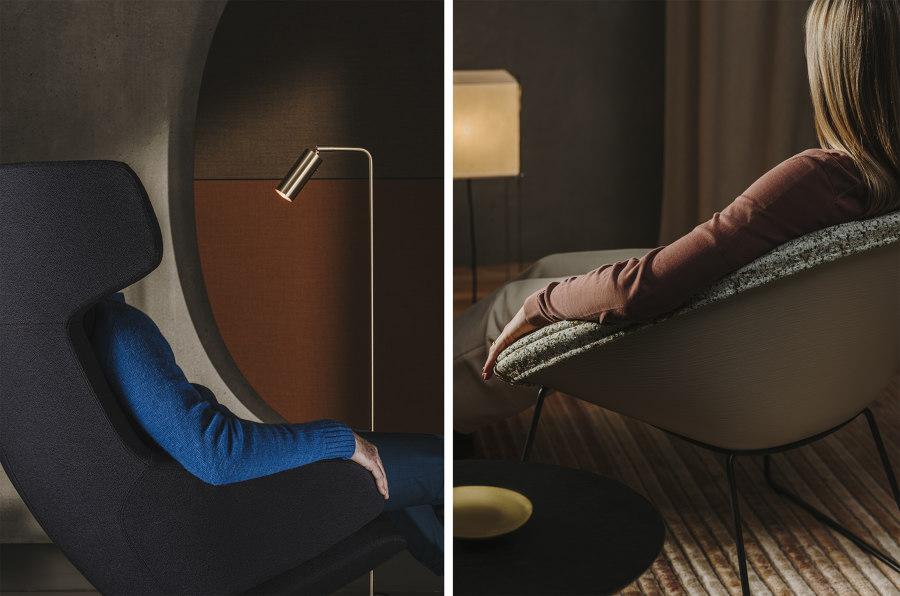
Arper’s Club Aston chair (left), by Jean-Marie Massaud, and Adell chair (right), by Lievore + Altherr Desilé Park, both maximise comfort, cocooning the sitter from everyday stress. Photos © Salva Lopez
×Developments in chair design have always mirrored the needs, aspirations and concerns of the day. Today, our lives are increasingly less compartmentalised between working, relaxing and socialising, resulting in a growing demand for chairs with a multifunctional appeal. Technology and wifi allows us to perch anywhere with a laptop, provided the chair is functional, comfortable and ergonomic. Yet there are also moments when we want to unwind and disengage from the stresses of the day in a chair that is capacious, cocooning and indulgently comfortable.
With its bare plastic shell or seat pad, Adell caters well to areas requiring durability. Photos © Salva Lopez
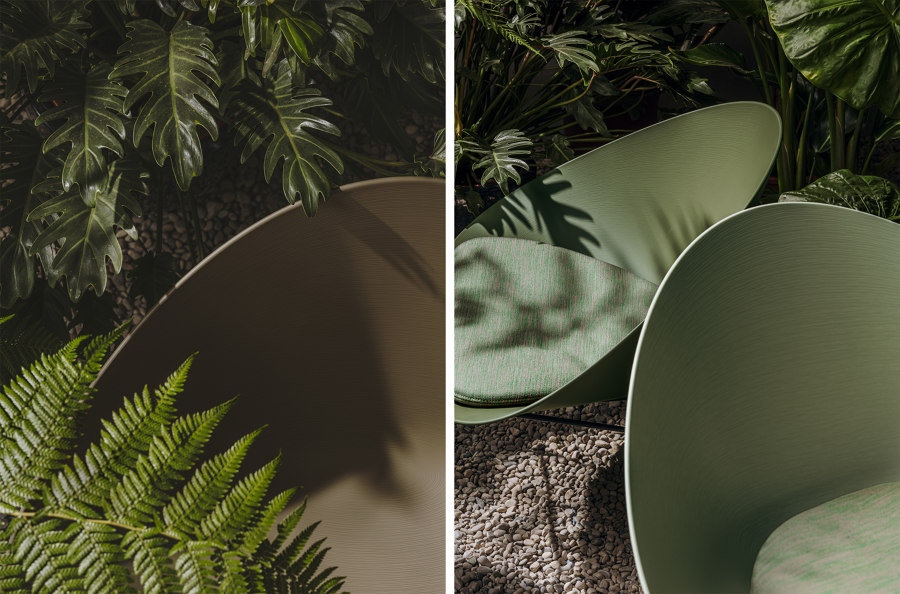
With its bare plastic shell or seat pad, Adell caters well to areas requiring durability. Photos © Salva Lopez
×A growing concern for sustainability is also impacting on the design industry. For architects and interior designers, a key criterion for specifying a new piece of furniture is how environmentally friendly it is. Clients, too, are basing their choices of products on how sustainable they are, questioning the provenance of materials used and their lifespan.
For Italian furniture company Arper, architecture and interior design necessarily spring from evolving social needs – and the same goes for the development of its own products. In fact, in 2000, Arper intuited a change of mood in interior design with its highly successful Catifa chair with an undulating backrest and seat, inspired by a carpet caught in the wind and taking flight. (Catifa is Catalan for carpet.)
When upholstered, Arper’s Adell chair, designed by Lievore + Altherr Desilé Park, is adaptable to relaxed indoor seating areas. Photos © Frederik Vercruysse and Salva Lopez
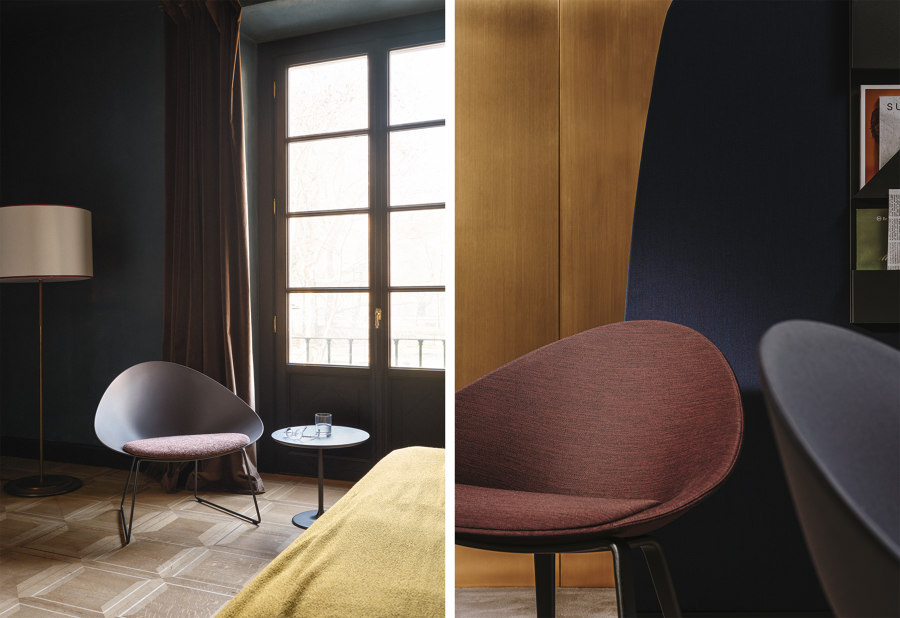
When upholstered, Arper’s Adell chair, designed by Lievore + Altherr Desilé Park, is adaptable to relaxed indoor seating areas. Photos © Frederik Vercruysse and Salva Lopez
×Thereafter, Arper introduced more collections within the Catifa family, which organically and fortuitously dovetailed with a global movement towards more comfortable, adaptable, informal interiors. This desire has only deepened with a hankering for peaceful, inviting spaces in which to work, relax or come together and socialise. From there, sprang Arper’s Soft(er) approach, an ongoing commitment to creating more ergonomic, human-centred furniture for softer, flexible, communal spaces that support people’s needs, boost their wellbeing and bring them together.
Adell also comes upholstered with an innovative, rumpled fabric that emphasises its informality or two-tone fabrics in on-trend colours, such as sage green and aubergine. Photos courtesy of Arper and © Frederik Vercruysse

Adell also comes upholstered with an innovative, rumpled fabric that emphasises its informality or two-tone fabrics in on-trend colours, such as sage green and aubergine. Photos courtesy of Arper and © Frederik Vercruysse
×Two new Arper designs illustrate this philosophy and the company’s ability to capture the zeitgeist. Catering to our ability to work almost anywhere is its new, understated Adell chair, designed by Lievore + Altherr Désile Park. Its versatility renders it suitable to all kinds of domestic and contract environments. ‘For Adell, we took a 360° design approach,’ explains Jeannette Altherr. ‘We wanted to create a completely customisable system. Adell’s friendly shape suggests an effortless use in all environments – especially relaxed seating areas. We imagine the fully upholstered version in hotels, restaurants, airport lounges or offices, while the extra soft cover would look great in relaxed co-working offices or homes. Conversely, the plastic shell on its own would be perfect in educational or healthcare settings with their higher demands on durability.’
In a garden or patio, Adell looks beautifully camouflaged against grass and foliage, thanks to its soft, natural hues. Photos courtesy of Arper
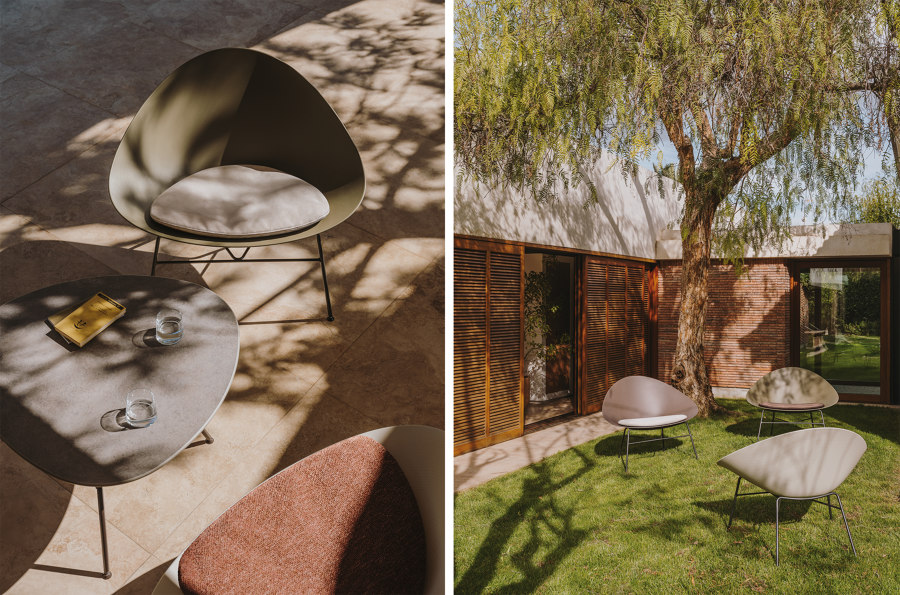
In a garden or patio, Adell looks beautifully camouflaged against grass and foliage, thanks to its soft, natural hues. Photos courtesy of Arper
×Suitable for indoor or outdoor use, the chair unites an inviting, arched backrest and flat seat with a curved front. Its elemental, neutral quality invites comparisons with anything from a pebble or lily pad to a mound of moss. Adell was in fact inspired by a seashell and is available in various natural hues, including a variety of greens that almost camouflage it if seen against a natural backdrop or grass or foliage. The piece is not only inspired by nature but radically sustainable. It features a textured recycled plastic shell that can be fully upholstered or fitted with a seat cushion or a removable cushion.
Play this video to hear Jeannette Altherr discuss the thinking behind Adell. Creative and Art Direction Shado
The upholstery, designed by Raf Simons for Kvadrat, is available as a relatively loose, rumpled fabric that playfully accentuates the chair’s informality or as a more conventional taut fabric with a subtly two-tone weave or one with tweedy flecks. Adell has slender wooden or metal legs, rendering it suitable both for garden settings and elegant interiors.
Video (top): Jean-Marie Massaud about Aston Club. Creative and Art Direction Shado. Centre, above: The chair is upholstered in a variety of high-end fabrics suited to contemporary and classical interiors. Photos © Frederik Vercruysse and Salva Lopez

Video (top): Jean-Marie Massaud about Aston Club. Creative and Art Direction Shado. Centre, above: The chair is upholstered in a variety of high-end fabrics suited to contemporary and classical interiors. Photos © Frederik Vercruysse and Salva Lopez
×By contrast, another new Arper design is Aston Club, designed by Jean-Marie Massaud, a lounge chair and footstool intended to maximise the sitter’s comfort. It is a development of his 2006 Aston chair but, with its higher backrest, is more cocooning and ergonomic.
‘With the Arper team, we paid special attention to sustainability. Each piece has been designed so as to be easily dismantled and recycled after use’
Its footstool provides yet more comfort. For Arper, this classic, timeless piece complements all the other furniture in its product portfolio. Like Adell, it can be upholstered with Raf Simons’ designs for Kvadrat or with high-end fabrics by Rubelli and Rohi. Aston Club rests on a robust aluminium base with a polished or powder-coated finish. ‘To the current elegant Arper collection, we have added exclusive fabrics and finishes that transport Aston Club from the most classic to the most radical environments,’ says Massaud.
Aston Club may look monumental but sustainability is crucial to its design – its internal parts are made of recycled plastic. Photos courtesy of Arper
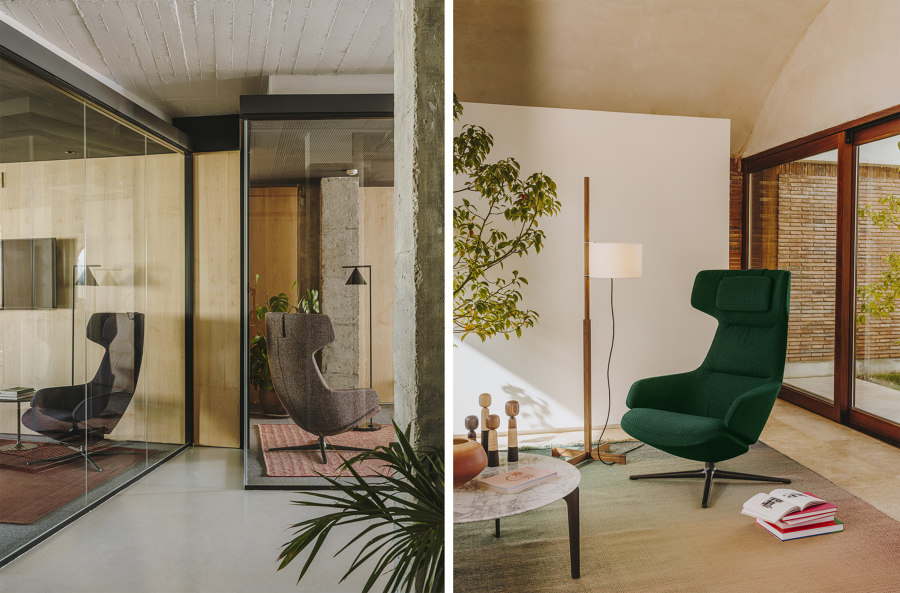
Aston Club may look monumental but sustainability is crucial to its design – its internal parts are made of recycled plastic. Photos courtesy of Arper
×This monumental chair might look luxurious but it doesn’t disregard sustainability. Aston Club’s internal parts are made of recycled plastic. ‘With the Arper team, we paid special attention to sustainability,’ says Massaud. ‘Each piece has been designed so as to be easily dismantled and recycled after use.’
Enhancing the comfort of Aston Club is its equally luxurious footstool. Photos © Frederik Vercruysse and Salva Lopez

Enhancing the comfort of Aston Club is its equally luxurious footstool. Photos © Frederik Vercruysse and Salva Lopez
×Indeed, both Aston Club and Adell, which are manufactured without using glue to avoid generating harmful emissions, can be entirely disassembled, allowing each component to be recycled or incorporated into other products to prolong their lifespan and reduce waste. Arper resolves today’s recurring quandary of how to produce covetable yet environmentally friendly products by developing its designs in a sustainable fashion from the get-go, as Adell and Aston Club testify.
The colourways of Aston Club’s fabrics blend beautifully with the trend today for interiors in rich hues. Photos © Salva Lopez
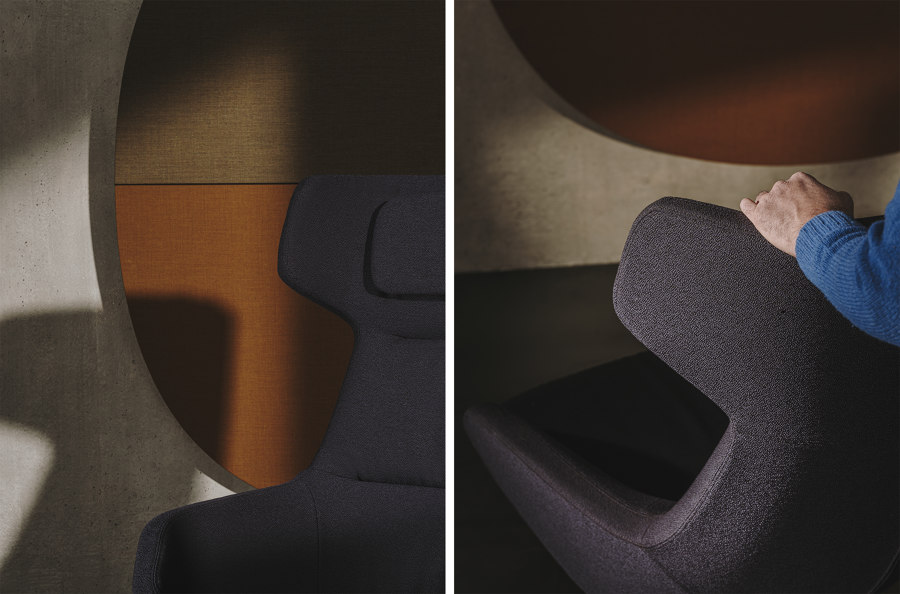
The colourways of Aston Club’s fabrics blend beautifully with the trend today for interiors in rich hues. Photos © Salva Lopez
×Their soft silhouettes are entirely in keeping with the continuing demand for soft-contoured, comfortable interiors. For Arper, furniture is a direct expression of specific social needs interpreted by the designers with whom it closely collaborates.
© Architonic











